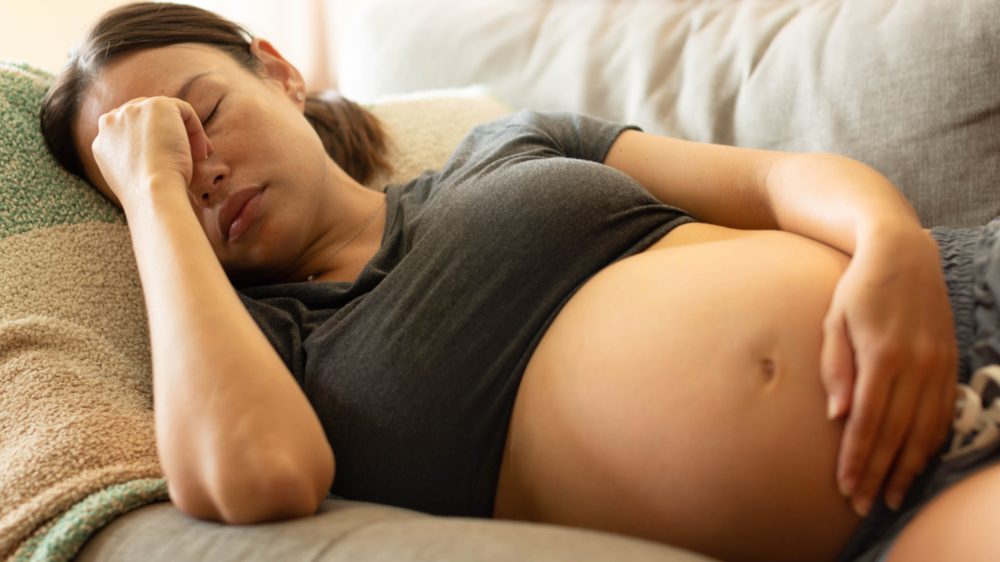In this article:
Why Side Sleeping Matters in Pregnancy
Doctors usually recommend sleeping on your side, especially after the second trimester. But why is this so important?- Improved blood flow: As the uterus grows, it may compress major veins like the inferior vena cava (IVC), which runs along the right side of your body. Side sleeping helps maintain optimal circulation to both you and the baby.
- Support for kidney and liver function: Sleeping on your side reduces pressure on internal organs, supporting better functioning and helping to reduce swelling in your hands, ankles, and feet.
- Reduced risk: Research has shown that sleeping on the back during the third trimester may be linked to a slightly increased risk of stillbirth. According to a 2019 review, back sleeping after 28 weeks can reduce blood flow to the uterus, placenta, and baby.
Left Side vs. Right Side: Is One Better?
Left side (Preferred)
- Considered the “ideal” sleep position for most of pregnancy.
- Enhances blood flow via the IVC.
- Reduces pressure on the liver.
- Helps your kidneys work better at flushing out waste, which can reduce swelling and fluid buildup in your body.
Right side
- Still considered safe.
- Slight chance of IVC compression, but nothing significant according to studies.
- If you naturally roll to your right side, there’s no need to panic.
When to Stop Sleeping on Your Back?
- During the first trimester, you’re pretty much free to sleep however you’re comfortable, and it’s safe to sleep in any position.
- By the second trimester, especially after 28 weeks, doctors recommend side sleeping.
- Sleeping flat on your back may:
- Lower circulation to the baby.
- Causes back pain or digestive problems.
- Trigger dizziness or breathlessness.
Is It Safe to Sleep on Your Stomach?
- Yes, in the early stages of pregnancy, stomach sleeping is fine.
- By weeks 16–18, it often becomes uncomfortable as the uterus begins to expand.
- There’s no risk of squishing the baby; the amniotic fluid and uterus walls offer natural protection.
Tips to Make Side Sleeping Easier
First Trimester
- Try using a pillow between your knees for extra support as you start adjusting.
- The earlier you get used to side sleeping, the more comfortable it’ll feel down the line.
- Orthopaedic knee pillows can provide extra comfort.
Second Trimester
- Opt for a firm mattress or place a wooden board under your mattress to prevent sagging.
- Invest in a pregnancy pillow (U- or C-shaped) for full-body support.
- Tuck smaller pillows behind your back to avoid rolling over.
Third Trimester
- Use wedge pillows to support your bump and back.
- Consider sleeping with your upper body elevated at a 45-degree angle, especially if you experience breathlessness.
- You can also raise the head of your bed by a few inches using blocks or books.
FAQs on How to Sleep Comfortably and Safely During Pregnancy, Best Positions to Help You Rest Easy
- Why is it not a good idea to sleep on my back during late pregnancy?
Sleeping on your back can compress major blood vessels and reduce blood flow to the uterus. From 28 weeks onward, it's better to sleep on your side to minimise the risk of complications. - Is it dangerous to sleep on the right side while pregnant?
No. Although the left side is preferred, sleeping on the right side is still considered safe during pregnancy. - Can I sleep on my stomach while pregnant?
You can sleep on your stomach until it becomes physically uncomfortable, typically around 16–18 weeks. The baby is protected by the uterus and fluid. - What happens if I wake up on my back accidentally?
It’s okay, you likely weren’t in that position for long. Simply roll to your side again. The body has natural ways of alerting you (like light-headedness) if there’s any issue.






